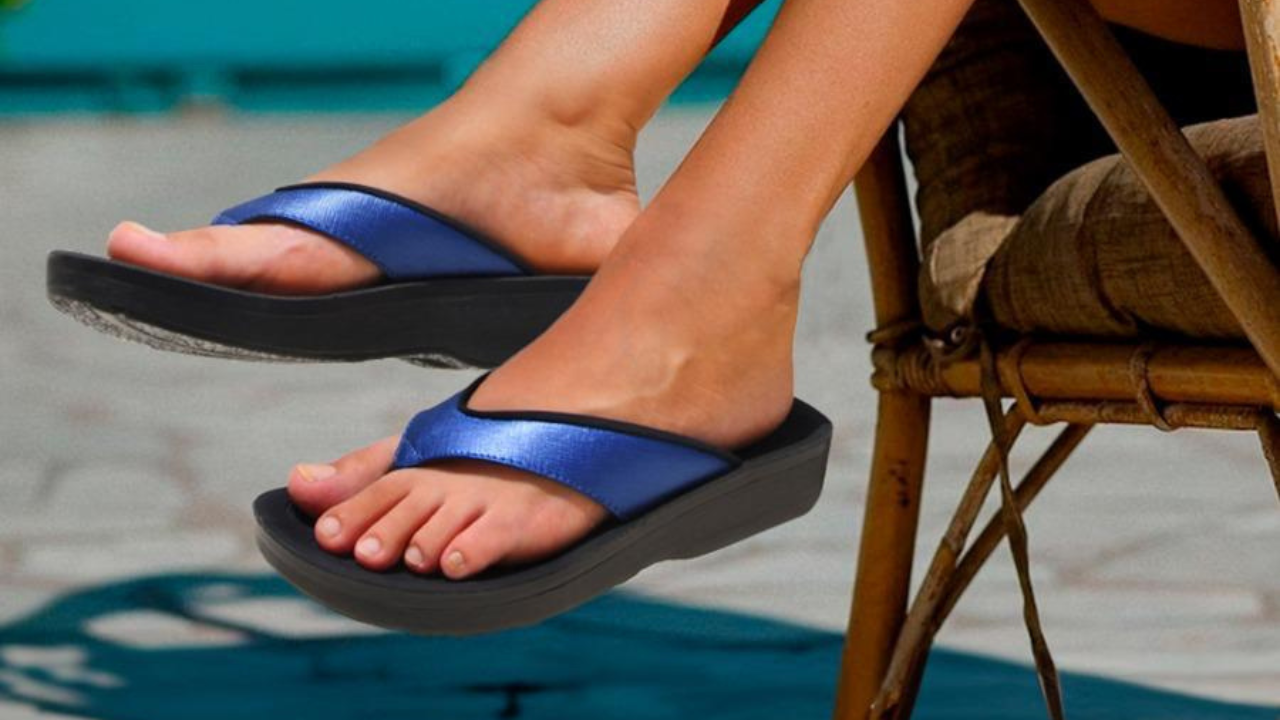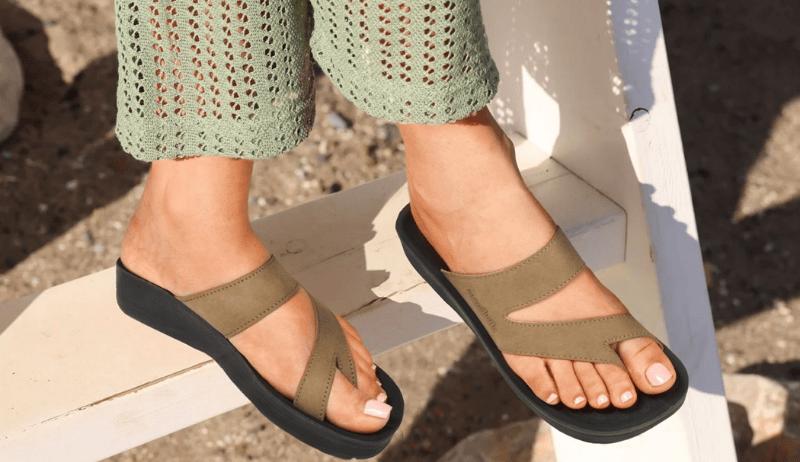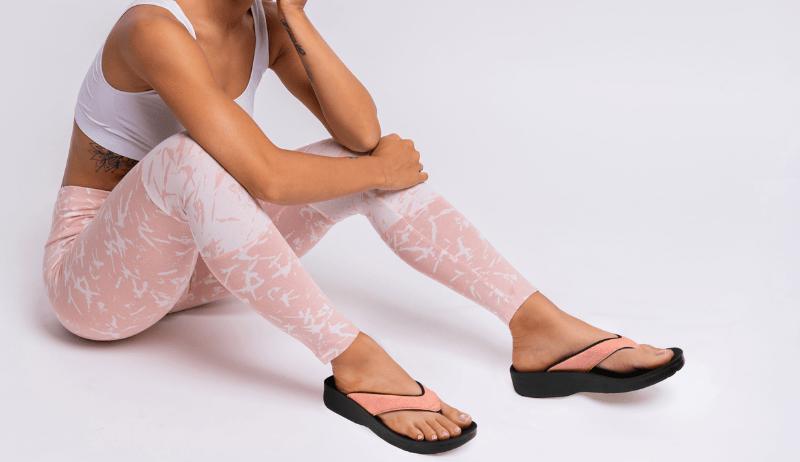You love the comfort of flip-flops, but could they harm your feet? Bunions are those painful bony bumps at the base of your big toe that often develop due to poor footwear choices. While flip-flops alone may not directly cause bunions, their lack of arch support and unstable design can worsen existing foot issues or accelerate bunion formation.
If you frequently wear flip-flops, you may notice increased strain on your toes and joints. Over time, this pressure can contribute to bunion development. To protect your feet, choose supportive footwear and be aware of the associated risks. Let's explore the connection between flip-flops and bunions and how to prevent them.
What Are Bunions?
Bunions are bony bumps that form at the base of your big toe when the joint misaligns. Over time, this misalignment causes the big toe to push inward, often crowding the other toes. You may notice:
-
Pain and swelling around the affected joint
-
Redness or stiffness, making movement uncomfortable
-
Difficulty walking if the bunion worsens
While genetics plays a major role in bunion development, your footwear choices can speed up the process. Tight, narrow shoes or unsupportive flip-flops strain your toes, increasing pressure on the joint.
Genetic vs. Environmental Factors
-
Genetics: You're more likely to develop bunions if your family has bunions.
-
Footwear: Shoes with poor arch support, such as some flip-flops, can exacerbate bunions.
You might wonder, "Can flip-flops cause bunions?" They may not be the sole cause, but are flip-flops bad for bunions? Yes, if they lack cushioning and stability. However, some flip-flops are suitable for bunions, offering arch support and wider toe space. If you need relief, look for flip-flops good for bunions designed with proper foot alignment.
How Flip-Flops Contribute to Bunions
Flip-flops may feel comfortable, but they lack the structure your feet need. Over time, they can worsen bunions or even speed up their development. Here's how:
1. Lack of Arch Support
Most flip-flops have flat, thin soles that fail to support your arches. Without proper cushioning, your foot collapses inward, straining the big toe joint. This extra pressure can push the toe out of alignment, making bunions worse.
2. Toe Gripping
Since flip-flops don't secure your foot, you subconsciously grip your toes to keep them from slipping. This constant clenching destabilizes your foot, overworking the muscles and tendons around the big toe joint.
3. Altered Gait
When you walk in flip-flops, your stride changes. Instead of a natural heel-to-toe motion, you land harder on your forefoot. This shift increases pressure on the metatarsophalangeal (MTP) joint, where bunions form.
4. Long-Term Wear Risks
Frequent flip-flop use doesn't just affect bunions. It can also lead to:
-
Plantar fasciitis (heel pain from lack of support)
-
Hammertoes (from toe gripping)
-
Arthritis (due to joint stress)
So, are flip-flops bad for bunions? If they're unsupportive, yes. However, some flip-flops from reputable brands like Aerothotic are suitable for bunions, providing arch support and a secure fit that reduces strain. If you need bunion flip-flops, choose ones with a contoured footbed and sturdy straps.
Other Foot Problems Caused by Flip-Flops
While we've talked about how flip-flops contribute to bunions, they can also cause other serious foot issues. If you regularly wear unsupportive flip-flops, you may develop:
1. Plantar Fasciitis
-
The flat, thin soles of most flip-flops fail to support your arches.
-
This strains the plantar fascia ligament, causing heel pain and inflammation.
-
Without proper arch support, your foot overpronates, rolling inward, which worsens the problem.
2. Stress Fractures
-
Flip-flops lack cushioning to absorb impact when you walk.
-
Repeated force on your feet can lead to tiny cracks (stress fractures) in bones.
-
Your feet need shock absorption, especially on hard surfaces like concrete.
3. Tendonitis & Bursitis
-
The constant toe gripping required to keep flip-flops on overworks tendons.
-
This can inflame the Achilles tendon or peroneal tendons along the ankle.
-
Bursae (fluid-filled sacs that cushion joints) may also swell, causing pain associated with bursitis.
Are All Flip-Flops Bad?
Not all flip-flops harm your feet; quality matters. While cheap, flimsy flip-flops can exacerbate bunions and cause foot pain, properly designed ones offer support and comfort. Here's what you need to know:
Why Most Flip-Flops Are Problematic
-
Flat, unsupportive soles strain your arches and big toe joints.
-
Loose straps force your toes to grip, increasing bunion pressure.
-
Thin cushioning fails to absorb shock, raising injury risks.
Try the Supportive Flip-Flops From Aerothotic
If you love flip-flops but want to protect your feet, Aerothotic flip-flops are an excellent choice. These flip-flops, good for bunions, feature:
-
Built-in arch support: Reduces strain on your plantar fascia and big toe joint.
-
Contoured footbed: Cradles your foot naturally, improving alignment.
-
Sturdy, adjustable straps: Prevent toe gripping and keep your foot stable.
-
Shock-absorbing soles: Minimize impact on joints when walking.
Where traditional ones can contribute to different foot problems, Aerothotic flip-flops are designed to prevent and relieve bunion discomfort.
When to Wear Flip-Flops
Even the best flip-flops for bunions shouldn't replace proper shoes for long walks. Reserve them for:
-
Short trips (beach, poolside, quick errands)
-
Indoor use (at home, locker rooms)
How to Treat Bunions Caused by Flip-Flops
If your flip-flop habit has led to bunions, you have options from simple fixes to surgical correction. Here's how to address the problem at every stage:
Non-Surgical Treatments
-
Orthotic Inserts: Support your arches and realign your foot to reduce pressure on your bunion.
-
Toe Spacers: Gently separate toes to improve alignment and slow bunion progression.
-
Silicone Bunion Sleeves: Provide cushioning for the joint to relieve immediate pain.
-
Physical Therapy: Strengthens foot muscles and corrects gait imbalances from years of flip-flop wear.
Surgical Option
-
Bunionectomy: Surgeons shave or realign the bone, but recovery takes weeks. Success rates vary; bunions can return if you wear bad footwear.
Prevention Tips for Bunions
You can prevent bunions before they start or slow the progression of existing ones with smart habits. First, limit flip-flop use to short-term wear, such as beach days or poolside lounging, rather than daily activities. Swap them for flip-flops, which are good for bunions and offer arch support and a stable base for open-toe comfort. Strengthen your feet with simple exercises: toe spreads to maintain flexibility, and calf stretches to improve alignment.
You should also pay attention to early warning signs, such as persistent redness or small bumps near the joint of your big toe. These signals that it's time to reassess your footwear. Remember, while flip-flops can cause bunions if they are unsupportive, choosing the right pair and staying proactive helps protect your foot health in the long term.
The Bottom Line
Flip-flops alone may not cause bunions, but their poor support accelerates existing issues and contributes to foot pain. The key lies in your footwear choices; opt for flip-flops that are good for bunions, such as those from Aerothotic, which provide arch support to minimize strain. If you already have bunions, early intervention with orthotics, exercises, or better-fitting shoes can help prevent their worsening. Surgery remains a last resort. Ultimately, you don't need to ditch flip-flops completely; just wear them wisely. Prioritize foot health by choosing supportive options and staying alert to early warning signs. Your feet will thank you for making smarter choices today.
Frequently Asked Questions
Is it bad to wear flip-flops all the time?
Due to their lack of proper support and cushioning, wearing flip-flops constantly can lead to foot problems such as heel pain, tendonitis, and hammertoes. Experts advise limiting their use to short durations and choosing more supportive flip-flops for everyday activities.
What are the worst shoes for bunions?
The worst shoes for bunions include high heels, narrow or pointy-toed shoes, flats without arch support, flip-flops, and overly flexible shoes. These styles can squeeze the toes, increase pressure on the big toe joint, and worsen bunion pain and deformity.
What causes a bunion flare-up?
Bunion flare-ups can result from tight or narrow shoes that increase pressure on the big toe joint, leading to irritation and inflammation. Other triggers include arthritis, foot injuries, and prolonged standing or walking, exacerbating joint stress and pain.
How do you stop a bunion from progressing?
Choose footwear with a wide toe box and good arch support to prevent bunions from progressing and reduce pressure on the big toe joint. Additionally, maintain a healthy weight and use custom orthotics to improve foot alignment and relieve stress on the affected area.






